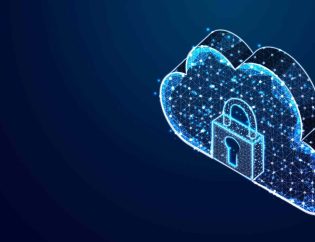
Table of Contents
Introduction
Understanding Cloud Security
Essential Elements of Cloud Protection
Types of Cloud Security
Common Challenges in Online Data Protection
Cloud Security vs Traditional Security
Benefits of Cloud Security
Best Practices for Keeping Online Data Safe
How to Choose the Right Cloud Security Provider
Conclusion
FAQs
Introduction
In today’s digital world, cloud security helps protect important business data. It includes rules, tools and technologies that keep cloud systems safe from hackers. As more businesses store data online, security is more important than ever. A good cloud security plan keeps data safe, follows rules and reduces risks of cyberattacks.
Understanding Cloud Security
Cloud security means keeping data, apps and systems safe when using online storage and services. It helps stop hackers and prevents unauthorized access by protecting networks, encrypting data and controlling who can use the system. As more businesses move online, having strong security is important to avoid risks. Companies should take the right steps to keep their cloud systems safe and working properly.
Essential Elements of Cloud Protection
- Keeping Data Safe with Encryption
Encryption is a way to protect data by turning it into a secret code. Only people with the right key can read it. This keeps information safe while it is being sent or stored in the cloud, making it hard for hackers to steal.
- IAM – Identity and Access Management
IAM helps control who can enter cloud systems. It uses passwords, two-factor authentication (2FA) and special permissions to make sure only the right people can log in. This stops hackers and keeps business data safe.
- Protecting Cloud Networks from Attacks
Cybercriminals try to break into cloud systems using malware, hacking and DDoS (Distributed Denial-of-Service) attacks. Security tools like firewalls, VPNs and intrusion detection systems help block these threats and keep cloud networks safe.
- Following Security Rules and Laws
Many businesses must follow rules to protect customer data. Some important rules are GDPR (General Data Protection Regulation), HIPAA (Health Insurance Portability and Accountability Act) and ISO 27001. These rules help companies keep data safe and avoid legal problems.
- Backing Up Data and Recovering from Disasters
If a cyberattack, system crash, or natural disaster happens, businesses can lose important data. Automatic backups and disaster recovery plans help save and restore lost information, making sure businesses can continue working without major problems.
- Finding and Stopping Cyber Threats
Modern cloud security uses AI-powered tools to watch for strange activities. These tools quickly detect, alert and stop threats before they can cause damage. This helps businesses stay ahead of hackers and keep their cloud systems safe.
Types of Cloud Security
- Infrastructure Security
Cloud systems store and manage important data. To keep them safe, businesses use firewalls, security updates and monitoring tools to stop hackers and system failures. - Data Security
Important information must be kept safe. Encryption, passwords and access controls help protect data so only the right people can see or use it. - Identity & Access Management – IAM
Not everyone should be able to access sensitive information. IAM systems help companies control logins, set permissions and use extra security like two-factor authentication (2FA) to keep data safe. - Application Security
Hackers can attack cloud apps. Businesses update software, use virus protection and follow security rules to keep apps running safely and smoothly. - Cloud Compliance Security
Many businesses must follow laws like GDPR and HIPAA to protect customer data. Cloud security helps companies meet these rules and avoid problems like fines or data leaks.
Common Challenges in Online Data Protection
- Risk of Data Breaches
Hackers target online systems because they store a lot of important data. If security is weak, sensitive information can be stolen or leaked. - Mistakes in System Settings
Sometimes, systems are not set up properly, making them easy targets for cyberattacks. These mistakes can lead to data leaks and security risks. - Following Security Rules
Companies must follow strict security rules, like GDPR and HIPAA, to protect data. If they don’t, they could face legal troubles and financial penalties. - Insider Threats
Employees or outside vendors may accidentally or intentionally share or misuse sensitive data, leading to serious security risks. - Cyberattacks That Crash Systems
Hackers can flood online services with too much traffic, causing them to crash and stop working properly, affecting businesses and users. - Confusion About Security Responsibilities
Many companies don’t fully understand who is responsible for protecting their data—themselves or the service provider. This misunderstanding can create security gaps.
Cloud Security vs Traditional Security
| Feature | Cloud Security | Traditional Security |
| Scalability | High | Limited |
| Accessibility | Global | Localized |
| Cost | Pay-as-you-go | High upfront |
| Compliance | Requires constant updates | More stable but slower |
| Threats | Cyber threats | Physical & cyber threats |
| Management | Provider & User | Fully User Managed |
Benefits of Cloud Security
- Enhanced Data Protection
Cloud security ensures that business data remains encrypted and protected from cyber threats such as phishing, ransomware and malware.
- Cost-Effective Security
Organizations save costs by leveraging cloud-based security instead of investing in expensive on-premise infrastructure and security tools.
- Regulatory Compliance
Security measures help businesses comply with industry regulations such as GDPR, HIPAA and ISO 27001, ensuring legal and operational safety.
- Scalability and Flexibility
Cloud security solutions are adaptable to business growth, providing scalable protection that adjusts to workloads without requiring major infrastructure changes.
- Continuous Threat Monitoring
AI-driven monitoring tools provide real-time alerts and proactive threat detection, allowing organizations to mitigate risks before they escalate.
- Improved Business Continuity
With secure cloud backups and disaster recovery solutions, businesses can restore critical data and services in case of disruptions or cyber incidents.
Best Practices for Keeping Online Data Safe
- Use Multi-Factor Authentication (MFA)
Strengthen security by requiring multiple verification steps, like passwords and one-time codes, before allowing access. - Perform Regular Security Checks
Conduct security audits often to find and fix weak spots before hackers can take advantage of them. - Encrypt Important Data
Protect sensitive information by converting it into unreadable code, both when stored and while being sent online. - Control User Access
Use role-based access control (RBAC) to ensure employees can only access the data they need for their jobs. - Monitor for Threats
Use AI-powered tools to track and respond to unusual activity, helping stop cyber threats before they cause harm. - Adopt a Zero Trust Approach
Verify every user and device before granting access to protect systems from unauthorized entry.
How to Choose the Right Cloud Security Provider
- Check Security Rules
Make sure the provider follows important security rules like ISO 27001, GDPR and SOC 2. These rules help keep your data safe. - Look for Strong Security Features
A good provider should offer data protection, secure logins, backup options and threat detection to keep your information safe. - Choose One That Can Grow With You
Your business may get bigger, so pick a provider that can adjust and expand security as your needs change. - Check for Good Customer Support
Make sure the provider has quick and helpful support in case you have any problems or security risks.
Keeping data safe in the cloud is more important than ever! 🔐 Protect your business with encryption, access control and threat monitoring. Stay secure, stay smart! #CyberSecurity #CloudSecurity
— Hyper Secure (@HyperSecure) February 21, 2025
Customer Testimonial
“After implementing cloud security solutions, our company has witnessed a significant reduction in cyber threats. With robust compliance measures and continuous monitoring, we now feel more confident in protecting our customer data.” – John D., IT Director
Conclusion
With more businesses using online storage, keeping data safe is more important than ever. Knowing how to protect information and using the right security tools can help stop cyber threats, follow rules and keep sensitive data safe.
How Hyper Secure Helps
Hyper Secure provides strong security solutions to protect businesses from online dangers. It offers data encryption, secure login controls, real-time threat alerts and compliance support to keep businesses safe. Whether it’s stopping data leaks, controlling user access, or tracking threats, Hyper Secure helps businesses stay secure and worry-free.
FAQs
Why do businesses need strong security measures in cloud computing?
Companies store sensitive data online, making it crucial to prevent unauthorized access, cyber threats and data breaches.
How can businesses protect customer data in online storage?
They can use encryption, access controls, regular security audits and real-time threat monitoring to safeguard sensitive information.
What are the biggest risks of using cloud-based services?
Risks include hacking attempts, data leaks, weak access controls and compliance violations that could lead to financial losses.
How does multi-factor authentication (MFA) improve online security?
MFA adds an extra layer of protection by requiring users to verify their identity using multiple methods, reducing unauthorized access.
What role does real-time monitoring play in preventing cyber attacks?
It helps detect suspicious activity early, allowing businesses to respond quickly and prevent potential data breaches or security threats.








